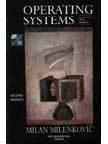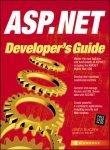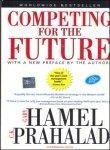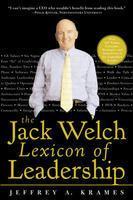 25.0%OFF
25.0%OFF

Download App
| >> | LShop | >> | Book | >> | Reference, Informati... | >> | Encyclopaedias & Ref... | >> | Eclipse: Living In T... |
 25.0%OFF
25.0%OFF
Eclipse: Living in the Shadow of China's Economic Dominance
-
ISBN
:
9788130920160
-
Publisher
:
Viva Books
-
Subject
:
Encyclopaedias & Reference Works, Business & Management
-
Binding
:
Paperback
-
Pages
:
256
-
Year
:
2012
₹
695.0
 25.0% OFF
25.0% OFF
₹
521.0
Buy Now
Shipping charges are applicable for books below Rs. 101.0
View DetailsEstimated Shipping Time : 5-7 Business Days
View Details-
Description
In his new book, Arvind Subramanian presents the following possibilities: What if, contrary to common belief, China's economic dominance is a present-day reality rather than a faraway possibility? Whatif the renminbi's takeover of the dollar as the world's reserve currency is not decades, but mere years, away? And what if the United States's economic pre-eminence is not, as many economists and policymakers would like to believe, in its own hands, but China's to determine? Subramanian's analysis is based on a new index of economic dominance grounded in a historical perspective. His examination makes use of real-world examples, comparing China's rise with the past hegemonies of Great Britain and the United States. His attempt to quantify and project economic and currency dominance leads him to the conclusion that China's dominance is not only more imminent, but also broader in scope, and much larger in magnitude, than is currently imagined. He explores the profound effect this might have on the United States, as well as on the global financial and trade system. Subramanian concludes with a series of policy proposals for other nations to reconcile China's rise with continued openness in the global economic order, and to insure against China becoming a malign hegemon.
-
Author Biography
Arvind Subramanian, an Indian national, is senior fellow jointly at the Peterson Institute for International Economics and the Center for Global Development. He was assistant director in the Research Department of the International Monetary Fund. He has written on growth, trade, development, institutions, aid, oil,India, Africa, the WTO, and intellectual property. He has published widely in academic and other journals, including the American Economic Review (Papers and Proceedings), Review of Economics and Statistics, Journal of International Economics, Journal of Monetary Economics, Journal of Public Economics, Journal of Economic Growth, Journal of Development Economics, Brookings Papers on Economic Activity, Oxford Review of Economic Policy, International Monetary Fund Staff Papers, Foreign Affairs, World Economy, and Economic and Political Weekly. He has also published or been cited in leading magazines and newspapers, including the Economist, Financial Times, Washington Post, New York Times, Wall Street Journal, Newsweek, and New York Review of Books. He has been interviewed on PBS' Charlie Rose Show and is a columnist for India's leading financial daily, Business Standard. He advises the Indian government in different capacities, including as a member of the Finance Minister's Expert Group on the G-20. His book, India's Turn: Understanding the Economic Transformation, was published in 2008 by Oxford University Press. His book, Eclipse: Living in the Shadow of China's Economic Dominance,' was published September 2011. He is coeditor of Efficiency, Equity, and Legitimacy: The Multilateral Trading System at the Millennium with Roger Porter and Pierre Sauvé (Brookings/Harvard University Press, 2002). Table Of Contents Preface Introduction A Brief History of Economic Dominance Systematic Manifestations of US Economic Dominance Defining Dominance and Power Quantification and Validation of Economic Dominance Identifying the Potential Attributes of Economic Dominance Occam Razorization: Narrowing the List Measuring the Three Determinants Validating Economic Dominance Weighting and Constructing the Index of Economic Dominance Results: Economic Dominance in the past Quantifying Currency Dominance Definition Benefits and Costs to the Country Issuing the Reserve Currency Short History What Determines Reserve Currency Status? Appendix 3A: A Regression Analysis of Reserve Currency Status Forces Driving Dominance: Convergence and Gravity Convergence of the Previously Poor Convergence of the Populous, Previously Poor Projecting Numbers: Background Analytics Results Ceveat Back to History: Economics Catches up with Demographics Conclusion Appendix 4A: Projecting GDP Growth Based on Purchasing Power Parity and Market Exchange Rates Appendix 4B: Trade Projections Based on the Gravity Model Projecting Economic and Currency Dominance Economic Dominance in the Future The Future of the Dollar and the Renminbi The Renminbi When the Chips are Down Conclusion Appendix 5A: Robustness of the Index of Economic Dominance A Historical Perspective on China's Distinctive Dominance Precocious or Premature: Can a Not-the Richest China be Dominant? China's Trade and Openness Outcomes in Historical Power Perspective Chinese Mercantilism in Historical Perspective Guarding Against Rash Prophesying China's Growth: Repeating Mistakes? Looking Back Realism of Trade Projections Conclusion Economic Cooperation with a Rising China How many Country Grouping are there in 2011? Historical Paralles Prospects for Cooperation leading up to Chinese Hegemony China as the New Raison d'Etre for Reviving Multilateralism Limits to the Efficacy of Trade Reciprocity with a Dominant China Alternative Approaches: Promiscuous and Hostile Bilateralism Asian-Centered Regionalism as a Medium Impediments to Revived Multilateralism A “China Round' for Teaching China Conclusion Postscript: American Resurgent or American Vulnerable? References Index
Related Items
-
of












 521.0
521.0





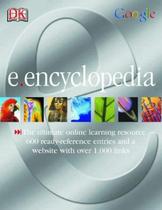
 662.0
662.0
